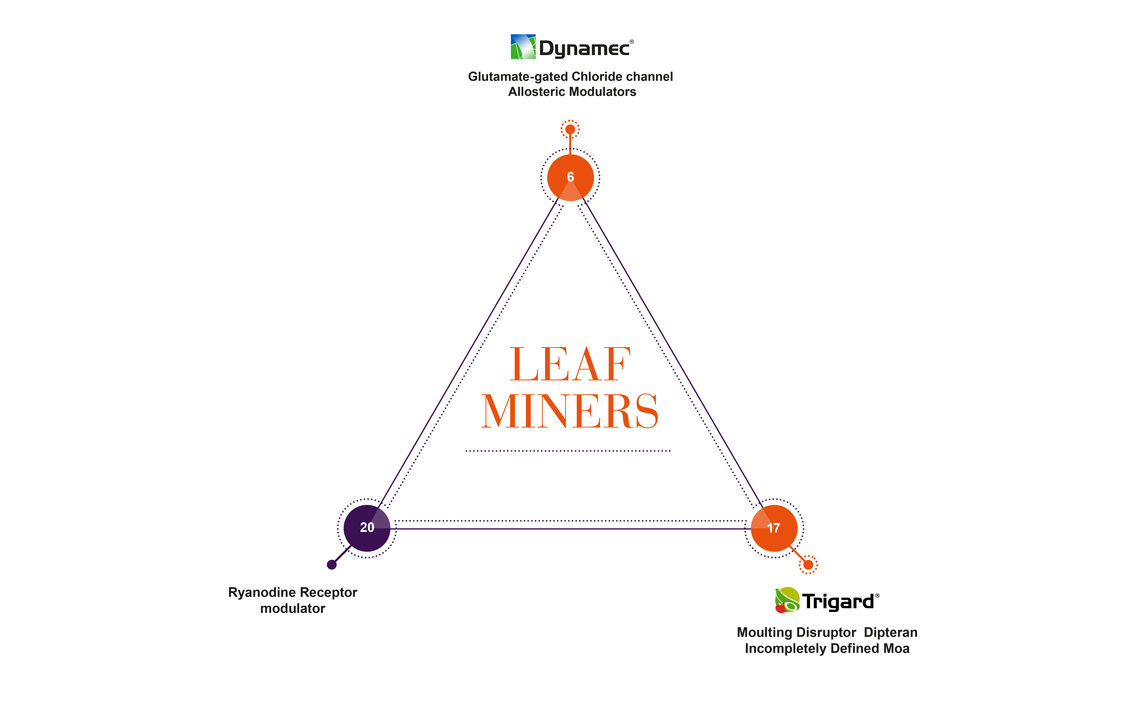Take control of leaf miners
Biology of the pests
Adult leaf miners are small (1.8 mm), yellow and black flies that are about the same size and shape as fruit flies. In contrast to shore flies, leaf miner adults are brightly colored and have clear wings. they are often found on yellow flowers or objects. Females insert their eggs within leaves and also puncture the leaf surface with the ovipositor to feed on damaged plant tissue. Larvae have three instars, forming larger mines inside the leaves as they grow. Liriomyza trifolii mines are readily observed from the top of the leaf, while Liriomyza huidobrensis mines may only be visible from the underside of the leaf. Liriomyza huidobrensis mines tend to follow the veining pattern of the leaf. after completing their feeding, larvae drop from leaves to pupate in the soil. Liriomyza trifolii can complete one generation in 14 days at 95°F 64 days at 59°F.
Damage
When populations are high, stippling, caused by females puncturing the leaves with their ovipositor to feed and lay eggs, can be serious. However, most of the damage is caused by the larval mines that detract from the aesthetic value of the crop.

Damages of Liriomyza trifolii on chrysanthemums
Management
Biological control
Biological control normally keeps these species in check in outdoor situations. outbreaks of leaf miners frequently occur following the disruption of their parasites with broad-spectrum insecticides. for this reason, try to use selective insecticides through the entire production cycle so that parasites can be conserved. The paracites Diglyphus spp. and Dacnusa sibirica are recommended in control leaf miners and may be useful in greenhouse situations, especially if greenhouses are screened to exclude adult leaf miners movement into greenhouses.
Cultural Control
Because leaf miners feed on a large variety of plant species, keep production areas free of weeds, which can serve as reservoirs for leaf miner populations. Leaf miners breed in weed or crop hosts outside of greenhouses, so weed management outside the greenhouse and exclusion of immigrating adults are especially valuable as management practices. Effective screens require a pore width of 600 microns or smaller. Carefully inspect plants being brought in to start a new crop to ensure that they are free of mines; discard infested plants or leaves. Steam planting beds immediately after removing infested plantings to eliminate leaf miner pupae in the soil.
Chemical Control
Use selected materials registered for use on greenhouse or nursery ornamentals. Read and follow the instructions on the label before using any pesticide. Before using a pesticide for the first time or on a new crop or cultivar, treat a few plants and check for phytotoxicity. Also consider pesticide resistance management and environmental impact. At least monthly, rotate insecticides with various modes of action to manage resistance and do not apply the same insecticide to successive generations.
Chemical control recommendations; Abamectin (Dynamec) and Cyromazine (Trigard)
Leafminer Resistance Management Guide


